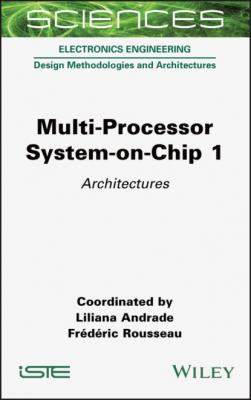ТОП просматриваемых книг сайта:
Multi-Processor System-on-Chip 1. Liliana Andrade
Читать онлайн.Название Multi-Processor System-on-Chip 1
Год выпуска 0
isbn 9781119818281
Автор произведения Liliana Andrade
Жанр Программы
Издательство John Wiley & Sons Limited
Table of Contents
1 Cover
4 Foreword
6 PART 1: Processors 1 Processors for the Internet of Things 1.1. Introduction 1.2. Versatile processors for low-power IoT edge devices 1.3. Machine learning inference 1.4. Conclusion 1.5. References 2 A Qualitative Approach to Many-core Architecture 2.1. Introduction 2.2. Motivations and context 2.3. The MPPA3 many-core processor 2.4. The MPPA3 software environments 2.5. Conclusion 2.6. References 3 The Plural Many-core Architecture – High Performance at Low Power 3.1. Introduction 3.2. Related works 3.3. Plural many-core architecture 3.4. Plural programming model 3.5. Plural hardware scheduler/synchronizer 3.6. Plural networks-on-chip 3.7. Hardware and software accelerators for the Plural architecture 3.8. Plural system software 3.9. Plural software development tools 3.10. Matrix multiplication algorithm on the Plural architecture 3.11. Conclusion 3.12. References 4 ASIP-Based Multi-Processor Systems for an Efficient Implementation of CNNs 4.1. Introduction 4.2. Related works 4.3. ASIP architecture 4.4. Single-core scaling 4.5. MPSoC overview 4.6. NoC parameter exploration 4.7. Summary and conclusion 4.8. References
7 PART 2: Memory 5 Tackling the MPSoC Data Locality Challenge 5.1. Motivation 5.2. MPSoC target platform 5.3. Related work 5.4. Coherence-on-demand: region-based cache coherence 5.5. Near-memory acceleration 5.6. The big picture 5.7. Conclusion 5.8. Acknowledgments 5.9. References 6 mMPU: Building a Memristor-based General-purpose In-memory Computation Architecture 6.1. Introduction 6.2. MAGIC NOR gate 6.3. In-memory algorithms for latency reduction 6.4. Synthesis and in-memory mapping methods 6.5. Designing the memory controller 6.6. Conclusion 6.7. References 7 Removing Load/Store Helpers in Dynamic Binary Translation 7.1. Introduction 7.2. Emulating memory accesses 7.3. Design of our solution 7.4. Implementation 7.5. Evaluation 7.6. Related works 7.7. Conclusion 7.8. References 8 Study and Comparison of Hardware Methods for Distributing Memory Bank Accesses in Many-core Architectures 8.1. Introduction 8.2. Basics on banked memory 8.3. Overview of software approaches

